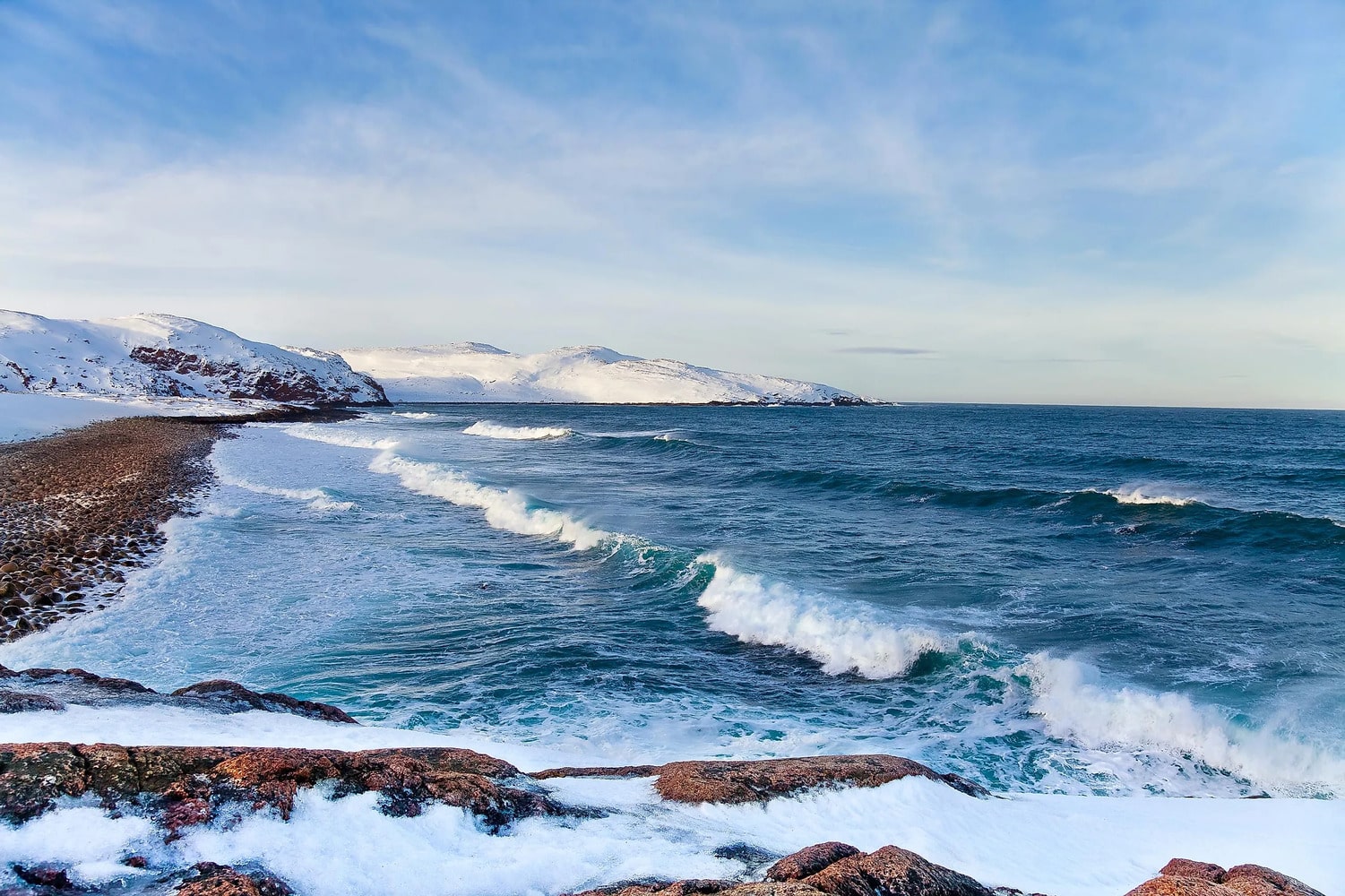The Barents Sea is one of the most unique regions of the Arctic Ocean, combining harsh polar conditions with rich biodiversity and significant geopolitical importance. Its waters wash the northern coasts of Russia and Norway, serving as a hub for scientific research, fishing, climate observation and international cooperation. Although it may seem like a remote and icy expanse, the Barents Sea is a complex and dynamic ecosystem. Below are interesting and educational facts about the Barents Sea that you might not know.
- The Barents Sea is named after the Dutch navigator Willem Barents, who explored Arctic waters in the late 16th century. During his expeditions, many previously unknown northern territories were discovered. His name became a symbol of courage and exploration in the polar world.
- Although the sea is part of the Arctic Ocean, its climate is relatively milder than other Arctic regions. This is due to the influence of warm North Atlantic currents. As a result, much of the Barents Sea remains ice-free even in winter.
- The total area of the Barents Sea exceeds 1.4 million square kilometers. It stretches from Novaya Zemlya in the east to the Norwegian coast in the west. The average depth is about 230 to 300 meters, with some areas reaching over 500 meters.
- The seabed of the Barents Sea is rich in natural resources, including oil, natural gas and minerals. Geological exploration and industrial extraction are actively taking place in the region. It holds strategic value for both Russia and northern European countries.
- More than 200 species of fish inhabit the Barents Sea, including cod, haddock, capelin, wolffish, halibut and herring. These species form the backbone of industrial fishing. The sea plays a vital role in supplying northern Europe with high-quality seafood.
- The sea is also home to many marine mammals, such as walruses, belugas, narwhals, harp seals and whales. Many of these animals make seasonal migrations over thousands of kilometers. The Barents Sea is essential for studying Arctic animal behavior.
- In spring, icebergs and floating sea ice often appear on the sea’s surface. They create navigation challenges but are a crucial part of the ecosystem. Icebergs serve as resting platforms for seabirds and seals.
- The Barents Sea is a key location for observing climate change in the Arctic. Water temperatures here are rising faster than the global average. This affects ecological balance and the migration patterns of marine species.
- Melting sea ice opens access to new fishing grounds but also threatens the natural habitats of Arctic wildlife. Because of this, scientists and ecologists are developing conservation strategies. International organizations actively monitor the region’s environmental status.
- The sea holds major military importance, especially for the Russian Northern Fleet. Naval bases are located in the area, and regular military exercises are held. At the same time, Russia and Norway cooperate on safety and fisheries management in these waters.
- In 2010, Russia and Norway signed a historic agreement on the delimitation of maritime boundaries in the Barents Sea. This ended a long-standing dispute over resource rights. Since then, cooperation between the countries has become more stable and productive.
- The Barents Sea is crucial for many Arctic seabird species. Thousands of birds such as guillemots, auks, gulls, skuas and loons nest on the islands and coasts. This makes the region highly valuable for ornithological research.
- The water in the Barents Sea is known for its clarity and high oxygen levels. This supports a diverse range of marine life and allows for in-depth oceanographic research. Scientists study both the chemical composition and the biological activity of its deep zones.
- The sea also holds historical significance as a site of past expeditions, trade routes and shipwrecks. Numerous vessels have sunk in its waters, some of which are now being explored by underwater archaeologists. This adds additional scientific interest to the area.
- Today, several research stations operate in the Barents Sea region, monitoring climate patterns, ice conditions and marine life. These efforts help predict future changes in the Arctic. International teams of scientists contribute to ongoing studies.
The Barents Sea is not just a cold northern body of water but a complex and living system with immense ecological, scientific and economic value. These amazing facts show how important the region is for understanding climate change, preserving biodiversity and strengthening global cooperation. It is a space where science, policy and nature come together. Exploring the Barents Sea brings humanity closer to understanding the Arctic and the planet as a whole.





